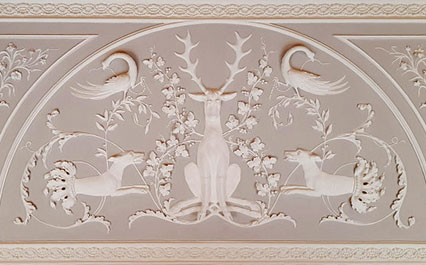HA4017/HA4018 Studies in Architecture and Ornament 1 and 2

This module will explore the relationship between architecture and ornament and will examine the formal and representative functions of decoration in architecture. Le Corbusier lamented the ‘bad taste’ of the Roman Renaissance; Edwin Lutyens dismissed Mughal architecture as ‘spurts by various mushroom dynasties with as much intellect as any other art nouveau’; Nikolaus Pevsner considered Gaudi’s architecture a ‘frantic concoction possible only in the country of Churriguera’, while Adolf Loos famously considered ornament as crime.
- Module Organisers:
- Professor Christine Casey
- Duration:
- all year
- Contact Hours:
- 1 x 2 hour seminar per week
- Weighting:
- 10 + 10 ECTS
- Asessment:
- Continuous assessment (50%) and examinations (50%)
In recent decades the subject of ornament in architecture has attracted renewed scholarly and professional interest. Nineteenth-century apologists such as Gottfried Semper and Owen Jones have returned to favour and a burgeoning literature seeks to discover why Venetian architecture is so richly made, why Islamic architecture is so resolutely ornamental, and why so many societies seek representation in architecture through sumptuous ornament. This module will address these questions by focusing on a range of key exemplars in Ireland and abroad and intertwining analysis of theory, practice and reception of ornament in architecture
Learning Outcomes:
Upon the successful completion of this module students should be able to:
- Understand and articulate the principal theoretical writings on the use of ornament in architecture
- Understand and articulate the relationship of architect and craftsman in the creation of the ornament and decoration
- Understand and use terminology appropriate to architectural ornament of the period
- Describe and analyse the use of ornament in the case-study buildings addressed during the course.

